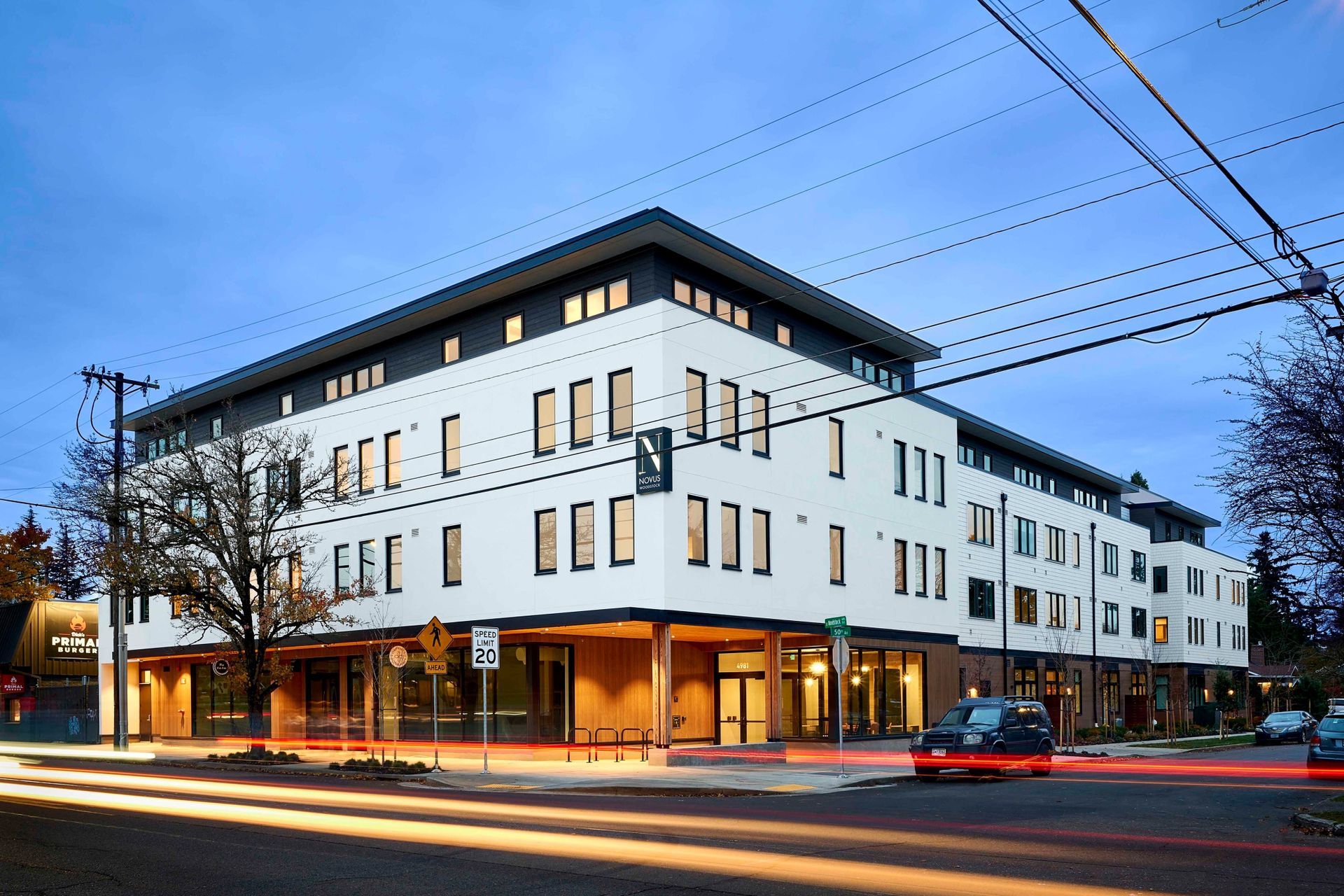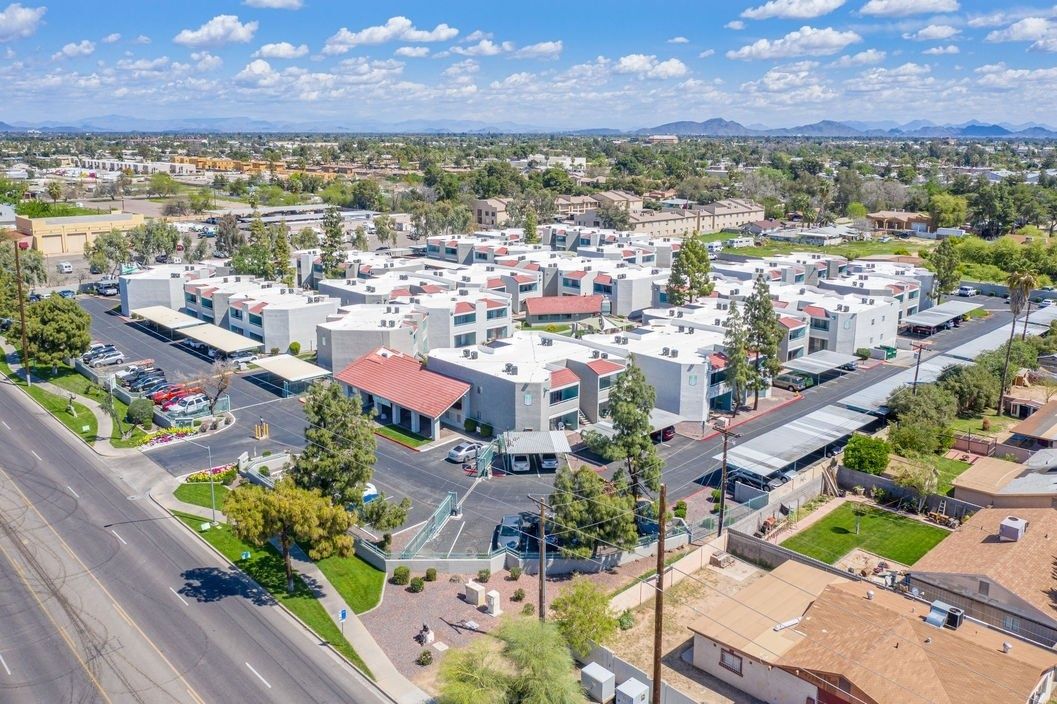Americans were on the move last year, adapting to changing job opportunities, expanding household sizes and pandemic restrictions. And, according to our most recent research of US migration patterns, renter interest grew stronger, with a 10% increase in renter applications in 2021 versus 2020. Some big urban hubs still attracted large renter cohorts, but smaller cities nearby stole the limelight as preferred destinations for apartment hunters.
As renting and self storage often go hand in hand, we were interested to see which are today’s renter havens, the cities that both attract and retain renter populations. To this end, the analysts at StorageCafe looked into 3.4M rental applications from RentGrow from 2021, illustrating renter interest across 257 markets with populations of over 100,000. We determined preferred migration destinations based on their applications, and we determined each destination city’s relative ranking for net renter migration — inbound minus outbound — as a proportion of its population. To get a further impression of a city’s popularity, we also looked at how many times its inbound migration was larger than its outbound. In addition, we examined demographics and changes in median income and average home size square footage that result from the moves.
Texas, and the Dallas–Fort Worth Metroplex in particular, strongly attracted incoming renters, just as they have been drawing in developers of storage and pretty much every other type of real estate. Communities a few miles out from the centers of metropolitan areas — and acting as ‘feeder’ cities, as their residents often commute — experienced some of the highest influxes of renters in relation to their population numbers.
Millennials are the renter age group most frequently wishing to move across the nation — 2.6 and 4.6 times more than Gen Xers and boomers, respectively — often reaping advantages by leaving large cities for smaller ones nearby or for ‘Cinderella’ states such as the Dakotas. Moving during the pandemic has certainly had its own specific pattern.
Dallas’s suburbs top the list of best cities for renters
Texas has been making headlines as a primary relocation destination for Californians. It is in fact attracting people from across the country, being the most popular state for state-to-state moves. Approx. 10.4% of all those interested in changing their residence for an out-of-state location, chose Texas. Florida, in second place, attracted 8.6%. With a strong economy and a growing housing market, which is also more affordable than many other in-demand regions, it’s no wonder the Dallas-Fort Worth area emerges as the most popular renter destination for Americans. Aside from two Dallas area feeder cities being the most popular places for renters based on our analysis of net migration as a percentage of population, Big D itself lands in the top 20 and Denton, in the north of the DFW metro, gets 24th place overall.
Irving comes out as the city that most appeals to renters. Home to a quarter of a million residents, it checks many boxes. It’s barely more than five miles from Dallas city center, its housing market features both space and affordable prices and it also hosts an enviable array of big-name employers. The inbound versus outbound ratio is 3.2, meaning that for every renter who left Irving in 2021, 3.2 people arrived. Dallasites constituted by far the largest percentage of incoming renters, more than three times the number that came from the city sending the second highest number, Arlington, TX.
Young families appreciate the place, with millennials making up the largest renter cohort moving into Irving – approximately 57% – with many attracted by the great employment options of the Las Colinas area as well as the lower cost of living. It’s perhaps no wonder that more than three times as many renters came here as left in 2021. In addition, 61% of Irving moves were between different states, with almost 12 times as many of those renters arriving as leaving in 2021, more than in any other sizable city in the country.
A little further out to the northwest in Denton County, Lewisville, in second place, is a focus for renters seeking both flexibility and recreational options in their choice of location and housing. Despite its population of barely more than 100K, it offers recreation for residents across the DFW, with boating and picnicking by its lake plus the new Railroad Park recreation grounds. Most of the renters moving to Lewisville are from other places in Texas – only 20% came from out of state – the highest number coming from Dallas.
The city of Dallas itself, however, sees fewer millennials arrive than leave, 47% compared to 57%. This generation especially, with young families and careers in full flow, are preferring Big D's nearby feeder towns. The cities that renters arriving in Dallas most often come from are Garland, Plano and Mesquite, while they most often leave for Irving, Plano and Arlington, all within the DFW Metroplex. Most frequently, out-of-staters come from Chicago and New York, increasing their apartment sizes by 17% and 18%, respectively. Dallas is far more favored by fellow Texans than by others, as only 29% of its new renters come from other states.
Further advancing the impression that the Lone Star State overall is a magnet for renters, Austin also stands out as a preferred renter destination. Austin scores 18th place in our overall ranking, receiving three times as many new renters as it lost. The city, already famous for its live music, good job opportunities and the most cosmopolitan atmosphere in Texas, has been welcoming people — including of course Elon Musk — from California and other places. Austin does significantly better than Dallas in attracting renters from other states, which make up no less than 44% of arrivals, and 57% of these are millennials.
Houston has been attracting renters for a while, and incoming renters account for more than one and a half times the number leaving. 37% of Space City’s new renters come from out of state, and 53% are millennials. The places Houston’s incoming renters most commonly come from are nearby Katy, Spring, Cypress and several other feeder cities in the area, but vigorous migration occurs in the other direction as well. Houston's large apartments average 881 square feet in size — even more than the 851 and 866 square feet available in Dallas and Austin — and it has a can-do attitude that allows for building more.
Florida's appeal still holding but attention shifts to mid-state cities like Orlando
Florida reached out to renters last year with its Opportunities for Utilities and Rental Assistance program, and of course its climate — in StorageCafe’s recent study of ideal snowbird destinations, six out of the top 10 were in the Sunshine State. Overall, almost 40% more renters arrived in Florida as left it last year, with Orlando shining brightest among their preferred cities.
Orlando scores third place in our general ranking but its story is much more nuanced. It’s actually the city with the most outbound migration as a percentage of population among the 257 cities we looked at. However, there were still one and a half times more renters coming in than moving out. This high fluidity may well be due to the changing employment prospects and the strong entertainment and technology sectors. The larger Floridian cities of Miami and Jacksonville provide substantial numbers of the Orlando incomers. Folk from the Big Apple are the most likely renters to arrive from out of state — with millennials and Gen Zers making up 52% and 21% of their numbers, respectively — and New Yorkers can expect a significant 33% living space increase in Orlando.
Central Florida also scores 5th place on our list with Palm Bay, just an hour’s drive from Orlando. This city of a little over 100K residents welcomed almost three and a half times the number of new renters as those who left. Jacksonville was far and away the largest source of new arrivals, and while they might lose a little living space — an average drop from 945 to 935 square feet — Palm Bay self storage is on hand to hold their extra belongings. The demographics in Palm Bay are shifting toward millennials and older generations, with Gen Zers making up 21% of those arriving but more than 26% of those leaving.
At the other end of the spectrum, Miami said goodbye to 70% more renters than it welcomed in 2021. Orlando was the second most popular destination among them, after Doral, a suburb of Miami, reinforcing the impression that Floridian renters are preferring locations away from large urban centers.
Arlington and Alexandria lure millennial renters away from DC
Arlington, Virginia, just over the Potomac River from Washington DC, has long been a place favored by families and by employees in the nation’s capital. Renting here is popular, many neighborhoods have excellent walkability, and Amazon’s soon-to-open HQ2 will be an added draw.
Scoring 4th place in our ranking, Arlington sees more than two and a half times the number of renters wanting to arrive than leave. Millennials make up about 51% of the former and 61% of the latter. Those arriving from DC are the biggest group of incomers, with the move resulting in a potential increase in both home sizes and earnings. Average apartment homes in Arlington are 854 square feet, around 15% bigger than those in DC. As far as incomes go, DC residents earn a median of $78,345, while in Arlington the median is $89,182. Other renters often arrive from Virginian cities further away from Washington such as Alexandria, Falls Church and Fairfax.
A little further down the Virginia side of the Potomac, but still less than half an hour’s drive or a subway ride from DC, historic Alexandria, in 16th place in terms of net migration per population, also offers Washingtonians around 15% extra living space. In addition, Alexandrians have a median income of $78,576, much in line with Washingtonians median income. Over half of those arriving in Alexandria in 2021 were millennials, and the renter demographic here became slightly younger overall.
Washington, DC, itself accounted for vigorous movement on the renter front in 2021, in both directions. Inbound migration exceeded outbound moves by almost two and a half to one. Interestingly enough, it seems the District has been leaking millennials, with 46% of the move-ins and 60% of those moving out belonging to Gen Y. However, Washington DC is attracting the youngest renters, with Gen Zers making up 29% of arrivals compared to 19% of those who left. Most leaving renters go to other places in the DMV. New York City is the most common non-DMV city of origin of those arriving, and they see a small average increase in their average living space, by 2.5% to 741 square feet.
Jersey welcomes New Yorkers, who get big living space gains in the process
Jersey City was a magnet for renters during 2021, with more than three times as many arriving as leaving. As might be predicted, the great majority came from just over the Hudson River. The job market is becoming increasingly attractive in Jersey City and the housing market allows for more room to roam, as apartments are larger in Jersey City, 786 sq. ft. vs. 723 sq. ft. in Manhattan, on average.
The Jersey City self storage market can also make it easier for people to move and enjoy their new homes. Average storage rents for non-climate-controlled 10’x10’ units in Jersey City are $218, lower than street rates in NYC’s five boroughs, which average out at $247, and much less than the $379 in Manhattan alone, as per Yardi Matrix data.
With all the move-ins, Jersey City is getting more of a young vibe, as 69% of inbound renters are millennials — as are 72% of the incomers from the Big Apple — and 19% are Gen Zers. New York City, by contrast, saw twice as many renters leave as arrive, the most striking negative net migration in the nation, and they chose Jersey City more than anywhere else.
College towns in Colorado and Arizona get increased attention even in pandemic times
Boulder, Colorado, with a population of just over 100K, acts as a feeder city for Denver at only half an hour’s drive away. It also has a greater net migration than the state capital, with 2.7 renters arriving in 2021 for every one that left. In harmony with Boulder’s large student population — the University of Colorado’s main campus is here — no fewer than 59% of the new arrivals were Gen Zers, compared to just 21% millennials. Moving and a lack of available space at home are among the main demand drivers of the self storage market in Boulder, which expanded its inventory by more than 100K square feet between 2020 and 2021, 79% more than the square footage increase of the year before.
Another college town, Tempe, Arizona, is just five miles east of central Phoenix and hosts Arizona State University’s main campus. Almost twice as many renters arrived as left in 2021, with those coming in from Phoenix getting approximately 10% more in terms of living space, moving from 798 to 877 square feet. Bucking the trend witnessed in similarly suburban places, an older renter demographic shift is seen in Tempe, with millennials making up 38% of arrivals and 48% leavers, and with roughly the same proportion of Gen Zers, 39%, going in both directions.
Interstate Migration: Now landing in ‘flyover country,’ the Great Plains see strong renter interest
Millennial renters are the generation most likely to make a move between states, making up 37% of the total number of the state-to-state migrating renters, with Gen Zers the next largest cohort at 30%. And they are often choosing states that don't appear on the radar so regularly.
Traditionally losing ground to more hyped states on the East and West coasts, US prairie states such as North Dakota, South Dakota and Nebraska have been intent on amping up their appeal in recent times. The Dakotas both saw double the number of incoming renters than outgoers, with Maine the only other state registering the same high figure.
In fact, the Great Plains city of Sioux Falls, South Dakota, achieved the highest ratio in the entire country of inbound versus outbound migration, almost four to one. Also in the top 10 in this respect is another Great Plains city, Lincoln, Nebraska, which saw two and a half times as many incoming renters as leavers in 2021 — and they were all millennials and Gen Zers, so the communities here can look forward to an increasingly youthful ambiance. The migration patterns of renters solely from out of state sees Nevada, Colorado and Arizona joining the Great Planes states, with around two and a half times more renters coming in from other states as leaving.
Illinois — still called The Prairie State — boasts 85% more arrivals than leavers, and purely in terms of raw net migration numbers, Chicago was in first place last year. The most popular routes into Chi-Town were from Baltimore, Indianapolis, New York and St. Louis, while within Illinois people were moving there most often from Evanston and Naperville. Although Chi-Town’s outbound migration numbers were also high — 4th after New York, Dallas and Houston — they were equivalent to only 29% of the incoming renters.
Chicago’s high net migration of 3.5 incomers for every leaver is most marked at both the younger and older ends of the age spectrum. Due to the city’s size, it gets 28th position in our ranking calculated as a proportion of population. For every Gen Zer that left Chicago last year, more than five arrived, and the Gen X and boomer generations combined were more than four times keener to start renting in Chicago than to leave it. By contrast, Millennials were only about two and a half times as likely to be coming as going, reinforcing the observation that this generation is preferring to gravitate to smaller cities.
As people worked from home, with a commute no longer necessary in many cases, they became accustomed to living in quieter surroundings in 2021, and this looks like continuing. The migration of renters to feeder towns located near the nation’s large cities reflects this. This takes the form of 'native' growth, where people migrating within the same area increase local populations, and 'non-native' growth where they swap one geographical area for another. Then there is the increased attraction of regions not so often considered preferred places to live.
Millennials show up as the generation most ready to make such moves, indicating that these newly desirable destinations appeal to those with young families — they may also have careers they can pursue from a home office or the entrepreneurial drive necessary to start a business in a new location. Many may still feel a spirit of change upon them as the pandemic recedes, wanting to put down roots somewhere new in America’s changing landscape.
Recent Posts



